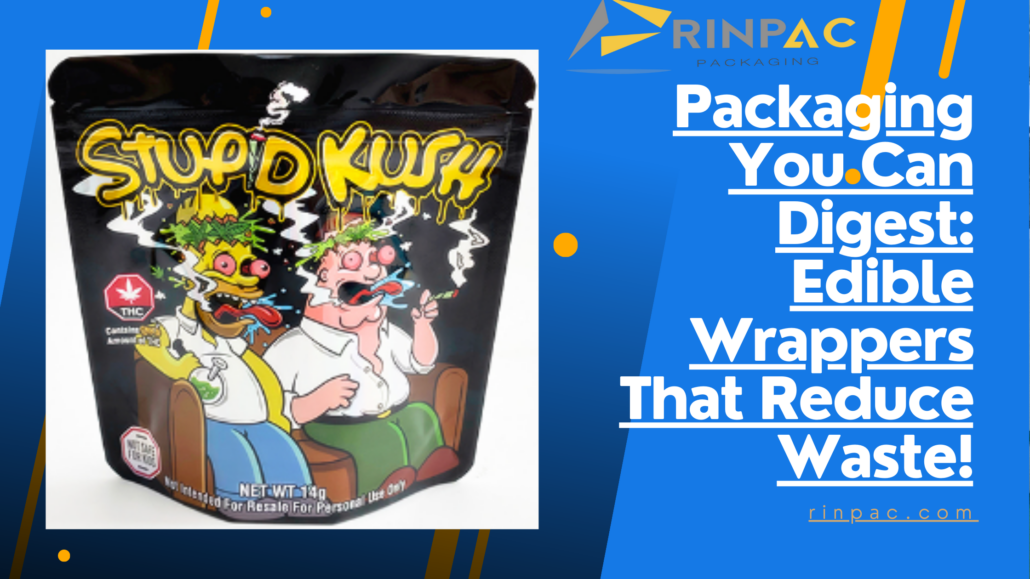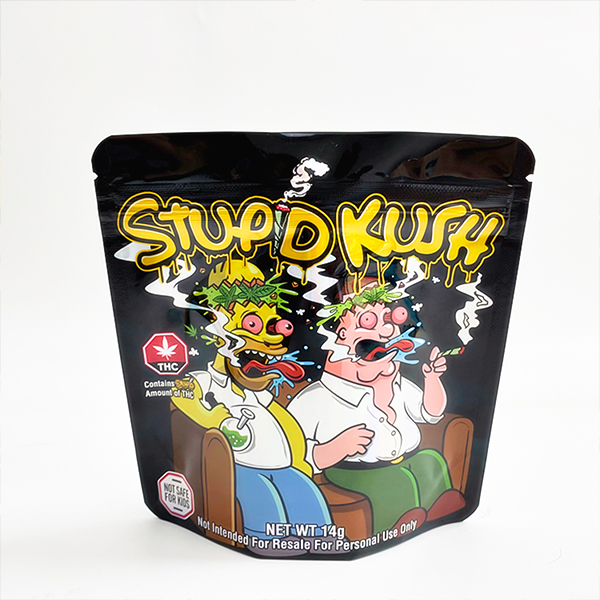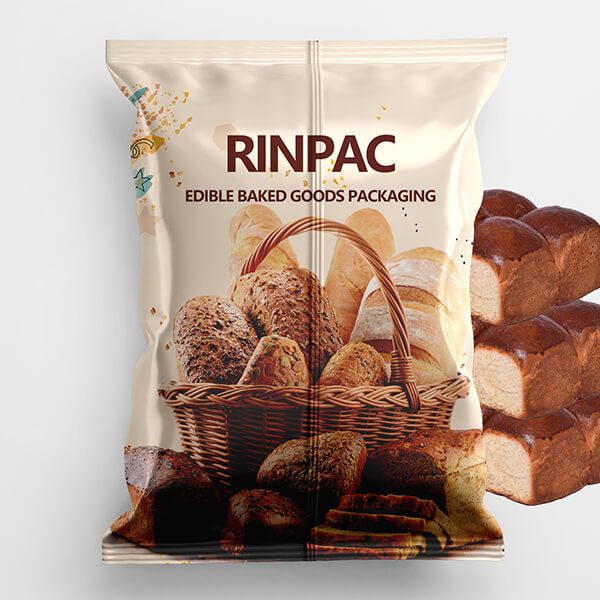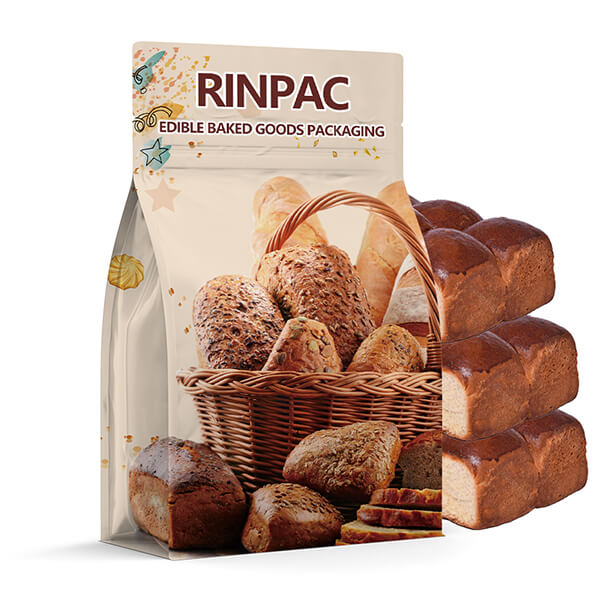
Packaging You Can Digest: Edible Wrappers That Reduce Waste!
In today’s world, packaging plays a significant role in our daily lives. It helps preserve and protect products, enhances their shelf life, and makes them convenient for transportation. However, with the increasing concern for environmental sustainability, traditional packaging has come under scrutiny due to its contribution to waste and pollution. This has led to the emergence of innovative solutions, such as edible wrappers, which are gaining popularity as an environmentally-friendly alternative. In this article, we will explore the concept of edible wrappers, their advantages, and how they can contribute to reducing waste.
Edible Wrappers: A Definition and Concept
Edible wrappers are a type of packaging that is designed to be consumed along with the product it contains. These wrappers are typically made from edible materials, such as plant-based fibers or other food-grade ingredients. They are designed to be safe for human consumption and do not pose any health risks.
Types of Edible Wrappers
There are various types of edible wrappers available in the market, ranging from thin films to thicker coatings. Some common types of edible wrappers include:
Edible films: These are thin, flexible films that can be used to wrap products such as fruits, vegetables, or confectionery items. They are typically made from plant-based materials, such as starch or cellulose, and can be transparent or opaque.
Edible coatings: These are thicker coatings that can be applied to the surface of products to protect them from external factors, such as moisture or oxygen. Edible coatings can be used for products such as meats, cheeses, or bakery items and are typically made from ingredients like proteins, lipids, or carbohydrates.
Advantages of Edible Wrappers
Edible wrappers offer several advantages over traditional packaging materials. Some of the key advantages include:
Environmental sustainability: One of the significant advantages of edible wrappers is their biodegradability and compostability. Unlike traditional plastic wrappers that can persist in the environment for years, edible wrappers can naturally degrade, reducing their impact on the environment.
Reduction of waste: Edible wrappers can significantly contribute to reducing waste as they are designed to be consumed along with the product. This eliminates the need for separate disposal and reduces the amount of packaging waste generated.
Conservation of resources: Edible wrappers are typically made from renewable and sustainable sources, such as plant-based materials. This reduces the dependency on fossil-based resources and helps conserve natural resources.
Reduction of plastic pollution: Traditional plastic packaging is a significant contributor to plastic pollution, which poses a severe threat to marine life and ecosystems. Edible wrappers offer a sustainable alternative to reduce plastic pollution as they are made from natural materials and do not accumulate in the environment.
Reduction of Waste: Addressing Current Challenges!
Waste management is a growing concern worldwide, and addressing the challenges associated with it is crucial for achieving environmental sustainability. Edible wrappers can play a significant role in reducing waste by offering a sustainable alternative to traditional packaging materials.
One of the current challenges in waste management is the increasing volume of non-biodegradable waste, particularly plastic waste. Traditional plastic packaging, such as wrappers, bags, and containers, often ends up in landfills or as litter, contributing to environmental pollution and harm to wildlife. Edible wrappers, on the other hand, can naturally degrade and reduce the accumulation of plastic waste in the environment.
Another challenge is the inefficient disposal and recycling of traditional packaging materials. Many packaging materials are difficult to recycle, and the recycling process often requires significant energy and resources. Edible wrappers, being made from natural materials, can be easily composted or consumed, reducing the burden on recycling facilities and promoting more sustainable waste management practices.
Furthermore, the global demand for packaging materials continues to rise with increasing population and consumption patterns. This has resulted in higher production and consumption of packaging materials, leading to more waste generation. Edible wrappers offer a promising solution to reduce the overall volume of packaging waste by providing an alternative that is consumed along with the product, minimizing the waste generated.
Environmental Benefits of Edible Wrappers
The use of edible wrappers has several environmental benefits, making them a sustainable choice for packaging. Some of the key environmental benefits of edible wrappers include:
Biodegradability and Compostability
Edible wrappers are typically made from natural materials, such as plant-based fibers or other food-grade ingredients, that are biodegradable and compostable. This means that they can naturally break down into organic matter, without leaving harmful residues, and become a part of the natural nutrient cycle. This helps reduce the accumulation of waste in landfills and promotes a circular economy approach to packaging.
Reduction of Plastic Pollution
Plastic pollution is a significant environmental issue, with plastic waste being a major contributor to marine pollution and ecosystem degradation. Edible wrappers, being made from natural materials, do not contribute to plastic pollution as they do not persist in the environment for years like traditional plastic packaging. This makes them a more environmentally-friendly option for reducing plastic pollution and protecting marine life.
Conservation of Resources
Edible wrappers are often made from renewable and sustainable sources, such as plant-based materials. This reduces the dependency on fossil-based resources, such as petroleum, and helps conserve natural resources. By utilizing renewable materials, edible wrappers contribute to a more sustainable and resource-efficient approach to packaging.
Consumer Safety: Addressing Regulatory Standards and Concerns
When it comes to edible wrappers, ensuring consumer safety is of utmost importance. As these wrappers are meant to be consumed along with the product, it is crucial to adhere to regulatory standards and address any potential health and safety concerns.
Regulatory bodies, such as the Food and Drug Administration (FDA) in the United States, have established guidelines and regulations for edible wrappers to ensure their safety for human consumption. These regulations specify the types of materials that can be used, the allowable levels of certain substances, and the labeling requirements for edible wrappers.
In addition to regulatory compliance, addressing consumer concerns related to the safety of edible wrappers is crucial. Some common concerns include allergen risks, potential choking hazards, and the overall safety of consuming packaging materials. Manufacturers need to be transparent about the materials used in edible wrappers, provide clear labeling, and communicate the safety measures taken to address consumer concerns.
It is also important to educate consumers about the benefits and safety of edible wrappers, highlighting their eco-friendly nature, biodegradability, and compliance with regulatory standards. This will help build consumer confidence and promote wider adoption of edible wrappers as a sustainable packaging option.
Industry Adoption: Success Stories and Case Studies
The adoption of edible wrappers in various industries has been gaining attraction, with success stories and case studies showcasing the viability and effectiveness of these innovative packaging solutions.
One notable success story is the use of edible wrappers in the food and beverage industry. Several companies have started using edible wrappers for products like candies, snacks, and condiments, replacing traditional plastic wrappers. These edible wrappers not only reduce the environmental impact of packaging waste but also offer a unique and memorable consumer experience. For instance, Loliware, a company specializing in edible packaging, offers edible straws that are not only biodegradable but also customizable with different flavors, adding a fun and interactive element to the consumer’s experience.
In the cosmetic industry, edible wrappers have also gained traction as a sustainable packaging solution. Some companies have started using edible wrappers for products like lip balms and solid perfumes, replacing plastic or aluminum containers. These edible wrappers provide a sustainable alternative to single-use plastic packaging, aligning with the growing consumer demand for eco-friendly beauty products.
Apart from the food and cosmetic industries, there are also promising developments in the pharmaceutical, agricultural, and other sectors, exploring the potential of edible wrappers as a sustainable packaging solution. For instance, edible capsules made from plant-based materials are being developed as an eco-friendly alternative to traditional gelatin capsules used in pharmaceuticals.
These success stories and case studies demonstrate the feasibility and effectiveness of edible wrappers as a sustainable packaging option in various industries, showcasing their potential to reduce waste and contribute to a more environmentally responsible approach to packaging.
Challenges and Limitations
Despite the numerous benefits and potential of edible wrappers, there are also challenges and limitations that need to be addressed for wider adoption and implementation. Some of the key challenges and limitations include:
Cost and Scalability
The production of edible wrappers can be more expensive compared to traditional plastic or other packaging materials. The cost of sourcing natural and sustainable ingredients, processing, and manufacturing edible wrappers can be higher, which can pose challenges for small-scale businesses or industries with low-profit margins. Additionally, the scalability of edible wrappers in large-scale production and distribution needs to be further explored to make them more accessible and cost-effective for widespread adoption.
Shelf Life and Durability
Edible wrappers may have limitations in terms of shelf life and durability compared to traditional packaging materials. As they are made from natural ingredients, they may have a shorter shelf life and be more susceptible to moisture, heat, or other environmental conditions. This may affect the overall effectiveness of the packaging in preserving the quality and freshness of the product. Further research and development are needed to improve the shelf life and durability of edible wrappers to meet the requirements of different products and industries.
Taste and Sensory Experience
As the name suggests, edible wrappers are meant to be consumed along with the product. This means that the taste, texture, and overall sensory experience of consuming the wrapper should be appealing to consumers. The taste and sensory experience of edible wrappers may vary depending on the ingredients used, and it is essential to ensure that they do not affect the taste or quality of the product. Maintaining a pleasant taste and sensory experience while using edible wrappers can be a challenge that needs to be addressed in product development.
Regulatory Standards and Safety
As mentioned earlier, ensuring regulatory compliance and addressing safety concerns are critical when it comes to edible wrappers. The use of food-grade materials, adherence to regulatory guidelines, and clear labeling are essential to ensure the safety of consumers. However, navigating the complex regulatory landscape and meeting the stringent standards for food packaging can be challenging and time-consuming for manufacturers. Robust quality control measures and regular testing may be required to ensure the safety and compliance of edible wrappers.
Conclusion
In conclusion, edible wrappers offer a promising solution to reduce waste and promote sustainability in the packaging industry. They are biodegradable, compostable, and made from renewable materials, making them a green alternative to traditional packaging materials. Edible wrappers have gained traction in various industries, including food and beverage, cosmetics, pharmaceuticals, and agriculture, with success stories showcasing their effectiveness.
However, challenges such as cost and scalability, shelf life and durability, taste and sensory experience, and regulatory standards and safety need to be addressed for wider adoption. Further research and development are needed to improve the production processes, shelf life, taste, and safety of edible wrappers.
Despite these challenges, the potential of edible wrappers to reduce waste and promote sustainability in packaging is undeniable. As consumer awareness and demand for eco-friendly packaging continue to grow, edible wrappers offer a unique and innovative solution to reduce environmental impact and contribute to a more sustainable future. Rinpac offers the best edible packaging for your business. Contact us today!
FAQs (Frequently Asked Questions)
Are edible wrappers safe to consume?
Yes, edible wrappers are made from food-grade materials and are safe to consume. However, it is essential to ensure that they are used as intended and are not consumed in excess.
Can edible wrappers be used for all types of products?
Edible wrappers are currently used for a variety of products such as candies, snacks, condiments, lip balms, and solid perfumes. However, their use may be limited by factors such as taste, shelf life, and durability, which need to be considered in product development.
Are edible wrappers more expensive than traditional packaging materials?
The production of edible wrappers can be more expensive compared to traditional packaging materials due to the cost of natural and sustainable ingredients. However, as technology advances and production processes become more optimized, the cost of edible wrappers may decrease.
How long do edible wrappers last?
The shelf life of edible wrappers may vary depending on the ingredients used and environmental conditions. Further research and development are needed to improve the shelf life and durability of edible wrappers.
Are there any regulatory standards for edible wrappers?
Yes, edible wrappers are subject to regulatory standards for food packaging. It is essential for manufacturers to ensure compliance with these standards, including the use of food-grade materials, proper labeling, and adherence to regulatory guidelines.



